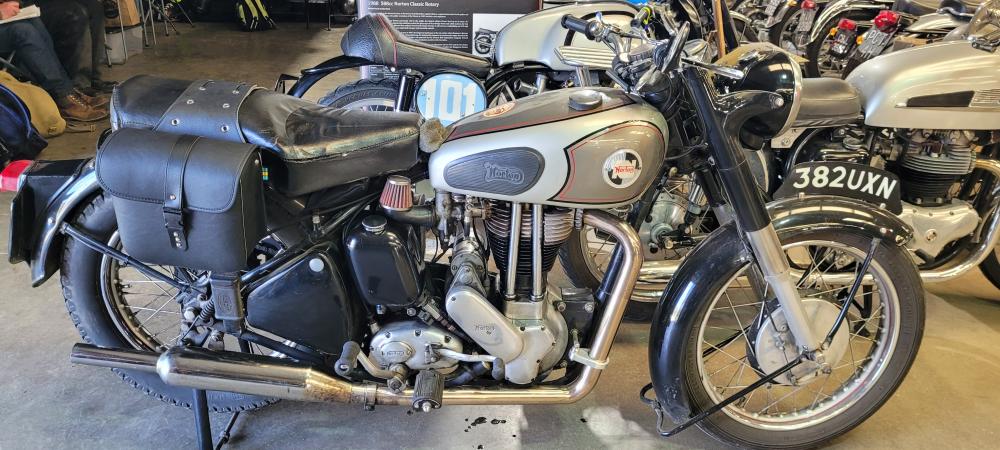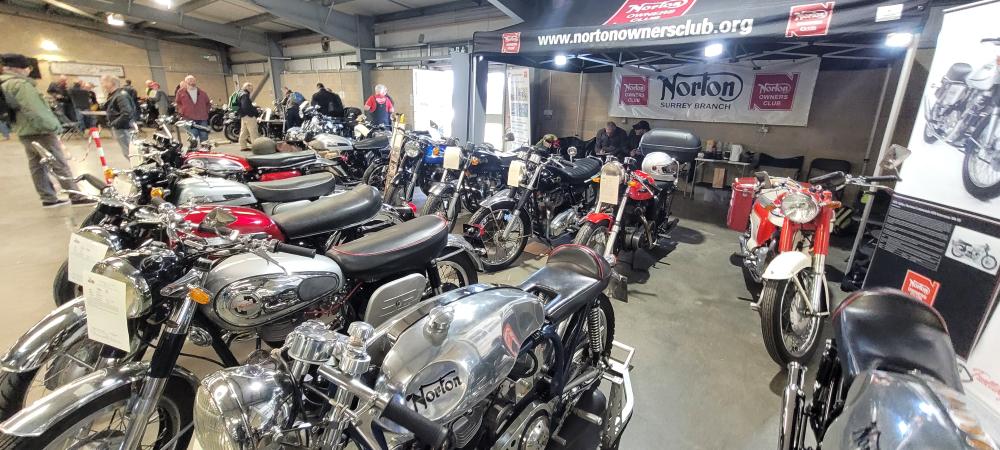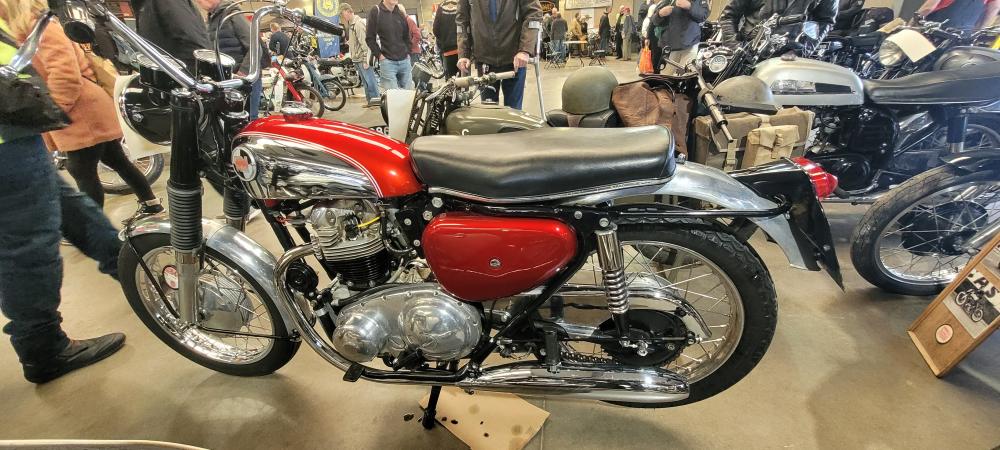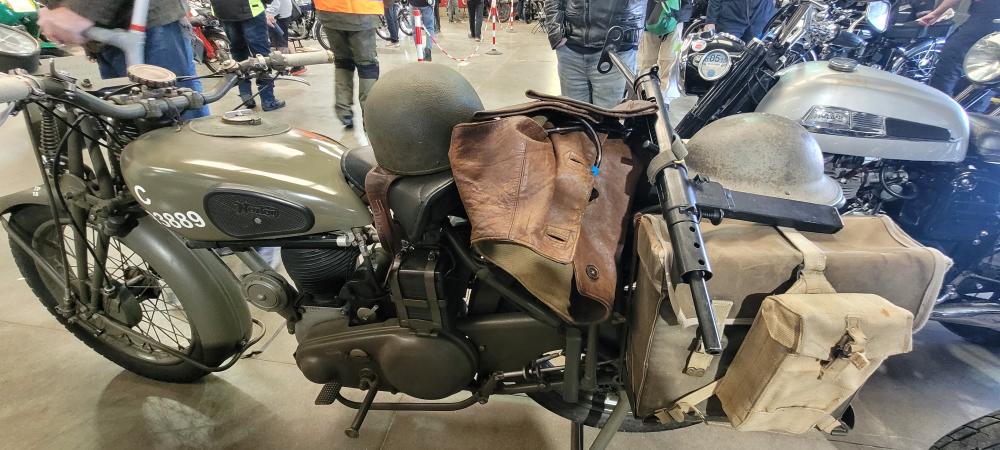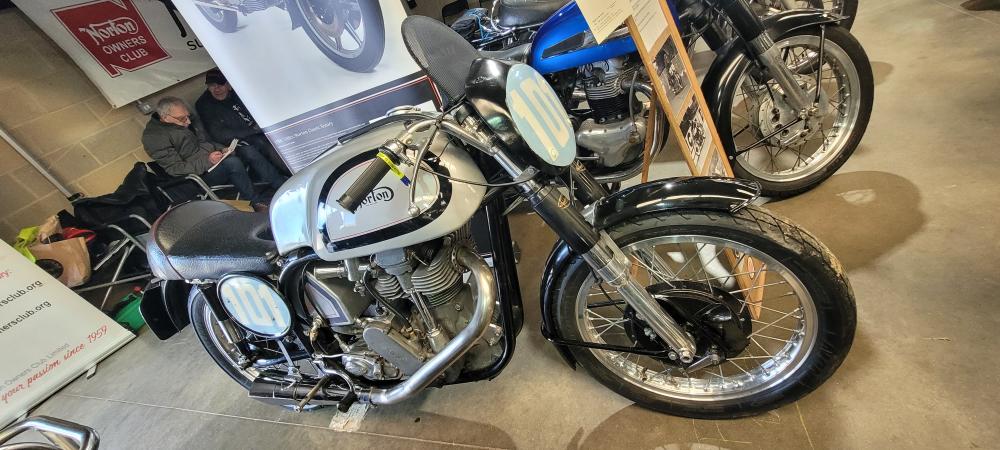A review of correspondence from NOC-L
Some views on replacement shock absorbers for the standard Commando item
Koni Dial-A-Ride vs. Hagon as replacements
My experience with Girling shocks is that they don't last very long; I went through about three pairs before fitting Konis and those have lasted me more than ten years. The ones I have are adjustable if you dismantle the spring, but I think these were superseded by the 'Dial-A-Ride' type with a little damping adjuster wheel on the top. I've heard that Hagons are supposed to be built to Girling specs and often wondered if the Girling 'quality' is still there. Also, Konis are rebuildable whereas I'm not sure if this is true for all other makes.
Konis are still available in Dial-A-Ride or standard, but the Dial-A-Ride model may not be made in exactly the right length for the Commando. The spring ratings are:- Koni standard: 125.84 lbs.; Koni Dial-A-Ride: 119.15 lbs; and the Hagons: 85.45 lbs.
Joe Schofield (skywings@bhpa.co.uk) on NOC-L 9th. Mar 1997
Fitting problem with Dial-A-Rides; use the 76-Series instead
I didn't think the Dial-A-Ride was available for Commando, as there is a fitting problem. The 76-series Koni, (previously referred to as Koni standard) is reportedly better made internally than a Dial-A-Ride. We use the 76-series unit from the Commando as the basic damper for many race bikes; I make 2 different special progressive springs and a range of adaptor sleeves for it. Of course the Commando specification has the Koni specified spring.
Philip Pick (p.m.pick@triples.demon.co.uk) on NOC-L 10th. Mar 1997
Konis and Hagons both recommended
I can recommend Koni rear shocks, with adjustable damping and spring. Remember, Dial-a-Rides don't fit due to the slope of the shocks, However, Koni make a special shock that is similar to the Dial-a-Rides that fit the Norton. The biggest problem is that to adjust the damping requires each shock to be removed first! Normally the middle position is chosen, and then left. As an alternative, I've seen strong recommendations of Hagon shocks. These are cheaper than Konis, but look more like the originals.
Paul Whitehead (paul.whitehead@virgin.net) on NOC-L 25th. Mar 1997
Pro Lift Performance - a product recommendation
I use a shock from Parts Unlimited. They are called Pro Lift Performance series and used to be known as Mulhollands. They have black bodies with dual springs (1 gold and 1 chrome) on each shock. At a quick glance they look stock and they present no mounting problems at all. I am a big fellow and ride 2 up on occasion; they work quite well for me.
ArtXanders (norton@netexp.net) on NOC-L 27th. Mar 1997
Can I modify these Konis to fit a Commando?
I found a pair of Koni shocks at a swap meet recently and hope to fit them to my Commando racer. They are chrome bodied with an aluminium top mount and 4 way damping adjustable (Dial-A-Ride?) with the following inscriptions 'Special D 209' Part No. 7610P-1348.
The springs are multi rate and black in colour but seem excessively stiff; they are colour coded green / green / yellow. What spring rate is this and will it be suitable for the above bike?f If not, what rate should I go for? These shocks look as if they are rebuildable; can I get a rebuild kit for them, and if so, from where?
John Martin (john.martin@fluordaniel.com) on NOC-L 23rd. Jul 1997
Specifications for some Koni units
Koni shock Part No. 7610-1348 is a Dial-A-Ride unit, sold for Yamaha XJ-400/XJ550 1980-1985 XS-650/SX-650 SE 1975-1986. My Koni list gives the following details: c-c, extended 325mm; c-c, minimum 262mm.
The fitted spring, which is still the supplied standard for this unit is a progressive, one, from 95 to 157 lb/inches. Koni do not supply a Dial-A-Ride for the Commando; I believe there is a fitting problem. However Koni still supply the older style 76 series (instead of the 7610 series) unit for this machine.
The specification of the correct 76 series unit is: c-c, extended 330mm; c-c, minimum 274mm. The fitted spring for this unit for Commando is a single rate spring of 112 1b/inches. I use this basic unit for many Triumph fittings, as it is in my opinion a much better unit than the Dial-A-Ride. I have had alternative springs made at 2 other (lighter and progressive) rates.
Philip Pick (p.m.pick@triples.demon.co.uk) on NOC-L 23rd. Jul 1997
Overcoming the fitting problem on Commandos with Dial-A-Rides
The fitting problem on Koni Dial-A-Ride shocks is quite easy to overcome, at least on my Mk.lll. It involves shimming the chainguard in towards the tyre with a washer and shimming the shock out away from the tyre with a washer.This solves the interference problem with the chain guard. You should use a longer bolt so you can fit either a lock washer or a Nyloc nut.
Thomas H. Allen (thomasa@halcyon.com) on NOC-L 29th. Jul 1997
'O'-ring problem with earlier Dial-A-Rides
Although Girlings were originally fitted, Konis were a popular aftermarket item of excellent quality, except that steel bodied Konis of the 1970s were prone to a fault whereby an internal 'O'-ring dissolved into the worst goo in the history of the planet. The goo plugged all the damping fluid passages producing infinite damping and very nearly a rigid suspension. They were repairable only with great difficulty.
Ben English (ben.english@dmvms.mailnet.state.ny.us) on NOC-L 3rd. Nov 1997
'O'-ring problem with earlier Dial-A-Rides - confirmed
I have had the disolving seal experience with Koni shocks. I dismantled the shock, cleaned it ( I thought) changed to a different 'O'-ring, reassembled it with clean fluid (5W fork oil), did the same to its mate and put them back on the bike. Six months later...solid rear suspension again. Does anybody know where I can get repair parts that won't dissolve, etc.?
ThomasH. Allen (thomasa@halcyon.com) on NOC-L 7th. Nov 1997
Considerations when choosing replacement shock absorbers
When selecting shocks (used and new) for a specific bike, there are a number of parameters one should pay attention to. First, try to obtain the original Girling code pertinent to your bike. I hold a table of data here. The Girling code will tell a knowledgeable person:-
| Damper code (of bare damper) | Spring code |
| Maximum and minimum damper extension | Spring rate (N/cm, Lbs/in) |
| Silentbloc sleeve dimensions, top and bottom | Linear rate, dual-rate or nonlinear progressive rate |
| Finish (0,1 or 2 covers fitted, each painted or chromed) | Free length |
| Toughness rating (street or competition use) | Fitted length |
| Type of spring seat | Spring finish (chromed or painted black) |
As can be seen, there are a number of parameters to consider when selecting a (mostly) non-original damper unit. In most cases, makers did extensive tests to select a combination of damper units that matched the bikes geometry, its intentional use, and its performance. Neglecting the recommendation will most likely impair on the roadworthiness of your bike. The annoyance over poor road performance will almost certainly outweigh joy over saving a few bucks.
My research has revealed three makers who will supply dampers for classic bikes - Dot/Armstrong (OEM on some bikes), Hagon (ex. Girling) and Koni (non-OEM on British bikes). But with all three, one has to check carefully that all requirements are met. Hagon for instance has a limited number of classic style designs for British bikes of the 50's, 60's and 70's, and will not be able to meet spring rate requirements for some models. Springs for dampers intended for Japanese models tend to be too large to fit classic style dampers (41/42/43mm vs. 38mm). This means that Girling style covers won't fit - a fact that alters the appearance of a bike. Hagon and Dot/Armstrong will meet the size requirement, while Koni is now phasing out all 38/39mm designs and concentrating on 42mm springs and damper units.
Knut Soensteby (knut.sonsteby@lhg.hib.no) on NOC-L 13th. Nov 1997

